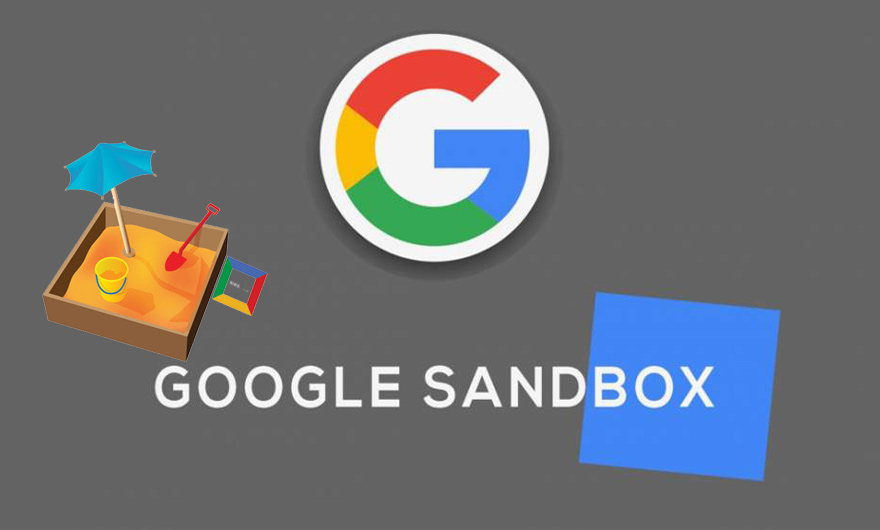The process of producing and implementing an idea to attract an audience is called content production. Content production can be textual, written, or visual. For example: producing podcasts, videos, infographics, and blog posts are all examples of different content production formats.
Why is content so important?
Content production in marketing strategies is a lifelong business with infinite input. In other words, by producing content, you provide free and useful information to your audience; And while attracting new customers and audiences, you also encourage your previous audiences by providing quality content.
So basically, you have to keep in mind that content is very important in digital marketing or even on a larger scale.
It is good to know that by producing content, you will also generate a good return on investment (ROI) for your business. Here are some content marketing statistics:
Content marketing had three times more growth than traditional marketing and at the same time it costs 62% less.
Small and medium-sized businesses that use content marketing are growing 126% faster than their competitors that do not use this type of marketing.
61% of online purchases are the result of customers reading a blog post.
Businesses and companies that publish more than 16 blog posts per month grow about 3.5 times more than competitors with less than 4 blog posts per month and attract more traffic. So today, knowing the content strategy is essential.
“Content equals the growth of your business”
Content planning and strategy:
Of course, without a proper plan, you cannot build a house, or without a sketch and wireframe, you cannot design a website. In the field of content production, having a plan and roadmap is also very important, in fact, if you do not have the right strategy to produce your content, you may deviate from the right path and instead of growing, you may harm your business.
A content strategy includes everything from brand introduction, tone, introduction and promotion of the produced content, which ultimately leads to turning it into a customer.
Content goal setting:
Similar to traditional marketing campaigns, the content strategy must be aligned with the marketing goals of a business, which in this case, undoubtedly pursues the goals of the company.
Your goal may be to increase website traffic or to direct the user to the site according to the content produced. In any case, the goals must be, i.e.: specific, measurable, actionable, relevant, and timely.
For example, it can be assumed that our goal in producing content is to increase organic site traffic by 25% in the next three months. In this case, any content that is produced must be in line with the intended purpose and contribute to the desired result. so, firstly consider the goal and then start producing content.
Creating an audience persona (customer persona):
Choosing a content strategy is more about what kind of content you intend to produce. So first you need to know who your audience is, what you have to say to them, and where you can find them.
Note: The way to endless content production is to make the audience feel that they are being spoken to directly.
The only way to build such an intimate relationship with a site visitor or customer is to get to know your audience as much as an old friend and understand their strengths, weaknesses, challenges, and fears so that they can find the dream solution to their problems and questions and get the best results.
Always keep in mind that you are implementing marketing techniques on humans. A human being who wants to communicate! Ideally, you should be able to communicate directly with each website visitor and have something to say. If you think such a thing is not possible, then what is the solution?!
What does it mean to create an audience persona?
Creating an audience personality means creating the person for whom you want to produce content. This semi-real character is created to represent your target. In fact, your message from content production reaches a group of people with such characteristics that they will eventually become your customers.
To build an audience persona, you first need to research, and finally, you need to be able to get a clear picture of the person whom is the target of your marketing and the person who may feel comfortable reading the content you produced.
Trust the audience’s journey in content
When you have a headache, you first look for the cause. This headache may be due to lack of sleep and caffeine or a cold. After finding the cause, the next step is to find a solution. Maybe a little sleep or drinking a cup of espresso or taking a cold pill will work. But in the end, it is you who will consider the various options and make the final decision.
So, a content creator simply puts several solutions in front of his audience to solve the problem. But choosing each of these solutions is up to the individual.
In fact, this process is called the Customer Journey in the content. In producing content, you must state all the necessary perspectives to reach the answer so that the audience can go through the path of awareness, measurement, and conclusion by reading the content.
Important Note: The main landscape should be arranged in different parts of the route and according to the user’s needs at that time, and the content of each stage should be produced attractively.
Although your main strategy is to produce puzzle content or step by step; But the website visitor should not notice this gap in any way, but the content should be produced in such a way that it contains useful and sufficient information for each visitor.
One of the issues that should be considered in the user’s content journey is the format of the content. In fact, you should use a format for your content every step of the way so that the audience can answer your question very quickly and not get involved with other things.
When a visitor enters the site for the first time, certainly the product demos are not attractive for him or her to see. Instead, having a content checklist such as a blog post title table is very useful and makes it easy for the user to go to the desired section of the article and find the answer to their question. This special technique is the path of awareness in the journey of customer content.
You do not need to introduce all possible solutions to the problem for the measurement and conclusion path. At this stage, the audience is more looking for practical advice to find out if your product or service is useful or not. Remember that you are always in direct contact with your audience at this stage.
In this step, we have listed the best content format for each stage of the customer content journey:
Awareness stage: submission of the full report, blog post, preparation of checklist, infographic, e-book, game, and contest
Assessment: podcast, webinar, presentation of comparative templates
Conclusion: Demo, free initial version, product guide, advice, discount code

Review of old content
You may have been producing content for a long time without a specific strategy, and now your business marketing department intends to review the content and develop a strategy. In this situation, there is no need to worry. That is, just because you do not have a specific strategy for producing content so far does not mean that none of the old content produced will fit into the new strategy!
Examining the old content is just to organize the content and put it in the new content program according to the strategies laid out. This review may cause you to rewrite some content and create new and engaging content for the existing gaps, according to the customer’s content journey.
In this section, we are going to discuss how you should check your old content:
Collect all the generated content in one Excel sheet.
In the next columns of the sheet, specify the target keywords, the audience persona, the stages of the customer’s content journey, the content format, the main title, and which stage of each journey the content belongs to.
In the next column, add the main criteria you want, such as the number of visits, content sharing, comments, and user engagement with the content.
Finally, categorize related posts by coloring and highlighting, and write descriptions for each that need to be rewritten.
While reviewing content can be tedious, it can drive a lot of value and traffic to your website. In addition, it now allows all content to be generated based on an approved strategy.
Choose the right format
In the first parts of the article, we explained the audience’s personality, and based on this, we realized that the main goal in content production is to consider the audience. Therefore, the format of the produced content must be relatable to the personality of the audience and it should be attractive so we can get closer to our marketing goals and prospects.
The format of the generated content can be a blog post, a comprehensive report, a video, an image slider, an infographic, an e-book, a podcast, or any other template that can work for you. Keep in mind that as long as the content format is appealing to the audience, its good.
Note: For each section of the content path, it is not necessary to consider a different format. Instead, try to focus on the relevance between content and its format. For example, in some cases producing a series of podcasts can be a good marketing tactic. But if you do not have enough resources to do this and it is difficult for you to wait, pursuing content production in a blog post format is a better option.
You can Ask yourself some questions as a guide when choosing a content format:
- At what stage of the customer’s content journey is this content available?
- How easy is it for a website visitor to digest this content?
- Which part of the content does your audience spend most of thier time on when they are online?
- In what content format can a foundation and consistency be achieved in relation to the customer?
- Is the content produced can be competitive?
Content Advertising
What is the use of a good content if it simply “blends in” with everything else out there? In an ideal world, as soon as a content is published on a website, a flood of visitors will come to you. But in reality, this is not the case, especially for beginners, and you need to publish your content on different platforms of the online space and direct people to the content. So as it is considered in strategies, content advertising is just as important as content production.
The content advertising program should also be based on the audience. consider what hours of the day the audience is online? Which virtual platforms do they use and how many times a day? What format do they like content to be produced in? What title in the email causes the user to click and enter the site?
Variety in content advertising is moderate. But all of these methods have their own rules.
Social media
Although social media is essentially a platform for communication, it can also be used to promote content. The key here is to balance personalized content advertising with providing useful, free information or entertaining content.

Facebook, Twitter, Instagram, YouTube, and Snapchat are all good intermediaries for generating and sharing related content, and the key to using social media is to change and adapt content to suit any platform.
e-mail marketing
Email marketing is one of the best ways to connect with your audience on any subject, especially content advertising. In fact, the people on your email list will no doubt want to hear from you, and you can be sure that they will receive the message.
However, by categorizing email lists for each audience, you can get better feedback and send emails to more enthusiastic people.
Paid advertising
Paid advertising per click (PPC) helps you deliver your content to your target audience for a fee. This type of advertising is used on social networks, search engines, and popular websites.
When you build an accurate audience, you know exactly which group of people you are targeting in paid advertising, and by limiting your entire web audience, you can figure out a great return on your business.
Republish content
Advertising content by republishing it by a reputable and well-known third party puts the content directly in front of the eyes of a new audience. The third person here can be people groups or associations where your content and brand are talked about spontaneously. Undoubtedly, these conditions are not only provided by your own efforts.
Content reuse
When you decide to reuse content, you are actually using content that has already taken a long time to produce to make it more useful to your audience by converting it to other content formats.
This way can be considered as content retrieval. Because you are in the process of creating content for your audience that takes less time and at the same time has a different format. For example, you can turn one of your blog posts into a video or infographic.
If you use a content format for your work, it is good to think of other effective methods and formats to attract more audiences.
Content production process:
Usually, marketing teams have a lot of work to do and do not have time to implement low-quality systems. So, the logical way is to create a process for everything that is done. For example, as a marketer, we design a system to implement our ideas and repeat the process over and over until we get results.
Remember all the marketing campaigns you’ve seen, from webinars to simple polls. All of these have their own production process. Content production is done in the same way and requires a process.
How to create a creative content:
- SEO research
Creating an audience persona gives you good ideas for writing content and finding the right titles. On the other hand, you can guess what questions your user is looking for, to answer that in your content. This is a great place to start. if you want to work for a wider range of audience, writing a blog post separately for each audience may seem great, but don’t you think this is a waste of energy?
Keyword research and SEO will help you find the volume of the searching term or the phrase you are looking for, so you can decide based on this, and to find out if the keyword is worth the investment in content production or not.
One good way to do keyword research is to write down questions that may your audience ask. Examine these questions by looking at the keyword in them to see if they are being searched enough by web users.
for better results, Remember this as a trick. At the beginning of blogging, instead of using competing words, target words that have a good average search per month (MSV) and are achievable according to the strength of the website domain.
Before explaining other things in the content production process, we need to mention a point about website SEO. As you know, one of the most important factors for ranking in the Google search engine is the credibility and strength of the website domain.
This credit is calculated based on the number of external sites that links to your website content. To do this for your site and increase the number of external links to your site content, you must have a large and comprehensive content archive and all your content must be produced with high quality. In this case, the number of external links to the site will increaseand you can easily reach the first page of Google in the field of competition with hard words.
To make the point clearer for you, let mw give you an example: If you have just started the process of producing content and SEO for your website; First target long or medium words with low or medium hardness (<50) and a monthly search rate of about 200-1000 MSV. Using this technique gives you a good chance of getting ranked in the words that people are looking for. Here are some keyword research methods:
- Use tools such as SEMRush and Moz Keyword Explorer
- Type your keyword in the Google search bar and write down the phrase that is suggested to you by the search engine before and after the word.
- Use terms and phrases that are known as Google-related suggestions and are located at the bottom of the SERP page.
2. Ideation
Once you’ve identified your target keywords, it’s time to expand your ideas with a brainstorming session. Studies show that the best way to organize content is to use the topic clusters technique. In this method, you prepare comprehensive content for your main title and purpose, which is called a column or pillar. Then you start generating content for other related topics and link to the Pilar content from each of these contents, in this case, the content with the original title is called Pilar and the other related content is called a cluster.
Using the topic cluster makes it much easier to implement your brainstorming ideas; Because in this situation you know the structure and you follow the topics based on it. As mentioned earlier, having a clear process in the production of content is extremely helpful and useful.
For example, you can implement your main keyword in Pillar content and then generate cluster content to delve deeper into the topic and address issues related to the target keyword. Cluster content usually targets long tail words and can be short and produced in various formats such as infographic, blog posts, or other templates.
Tip: If you work in a unique field that is less talked about and you are confused about finding ideas for content, we recommend that you read a few books related to your business to come up with good ideas or suggestions. And use related searches on the Google SERP page. Finally, after finding the ideas in question, set up your content calendar and start the content production process.
3. Writing
In this section, we want to talk about the content production process. Because content production is one of our special interests in the Vancouver SEO site design team. Your expertise may be in producing content, videos, articles, infographics, or podcasts. whatever content format you work with, the production process is almost identical to the following:
- Personalize content production in any field and produce your content with specific features. You can even use humor or motivational tips related to the topic.
- Write the title and meta description of the SEO so that the user is encouraged to click. Write some of the benefits of reading the article in the description to somehow tell the user what information will they get by reading this article.
- Generate unique content that is unmatchable. Present the points you want to emphasize in a different format or by researching and studying, find unique points to present in your field of work.
- Focus on one idea at a time to produce the best content on the topic that encourages the audience to read and be careful not to confuse them with additional explanations.
- Have your own style and voice in content production and do not try to impress the user by using heavy words and metaphors.
- Explain clearly and concisely, the main goal in content production is to communicate with the audience and create value for them. to achieve this goal, you shouldn’t use metaphors or misleading phrases.
4. Content editing
Content editing is a process that depends on the way people think. You may want to start editing immediately after the content is generated or wait a few days and do the editing after a while and when you are more relaxed. For example, it may be very important for you to follow the writing tips, or you may prefer the content to be written in a conversational tone.
However, some things must be observed in all types of content, whatever your style and context is. For example, having a clear voice and melody in the content, clear language, short sentences, having enough white space are among the main things in reviewing and editing content. Finally, ask your manager or co-workers to review your work and comment. Here are two tools that can help with content editing:
- Hemingway Editor
- Grammarly
5. Upload content
Once the content is ready, it’s time to upload it. You need to upload content somewhere so that your audience can easily access it. In this case, it is recommended to use a content management system (CMS) for the website. In fact, content management systems allow you to easily upload any type of content to your site.
There are many benefits to using a CMS. For example, you can use it to create an internal link between the generated content and also link to the landing page. You can archive all the content together. In some articles and where necessary, you can use email or other calls to action, and more importantly, you can carefully analyze advertising campaigns and content.
6. Content publishing
Publishing content on the site is very simple and happens with just the click of a button. So why do you think we have dedicated one of the stages of the content production process to publishing? The answer is that content publishing does not always follow this simple process. This means that you may want to publish the content immediately after uploading it or wait for the best and most appropriate time to do so.
If you are just starting, the immediate release of content will have little effect on the behavior of your website users. But if you commit to publishing content at a specific time; This means, for example, that your audience knows you in such a way that every Wednesday night a serious post goes on the site. In this case, the immediate release of content after production is not interesting.
Another point to consider when publishing content is the specific dates and events of the community. If the content of your website is related to a specific historical event, it is better to publish the content at more appropriate and relevant times.
Using a content management system or CMS allows you to set the post on the site in a timely manner and then safely move on to other tasks.
Content generation tools
Although using CMS will help you in content management, but it does not help in its production, in this part of the article, we will introduce some useful tools for content production. These tools are extremely useful if you do not have artistic and graphic skills or you cannot hire someone to make infographics and gifs, and with their help, you can create professional content for any subject.
Canva tool:

This program is used to create beautiful designs on any platform, such as photo covers on Facebook, social media ads, and infographics. Also, canva has thousands of ready-made design templates that you can use for free by changing colors, photos, and text.
Giphy tool:

Gifs is actually a replacement for emojis and its used to communicate and in the content. Giphy tool allows you to use millions of free gifs and even create your own gif.
Vidyard tool:

This tool is a video hosting platform that is widely used in marketing works. With Vidyard you can implement new layers, text or CTA, subtitles, and other content SEO features on your video.
SurveyMonkey tool:

SurveyMonkey is a platform used to build various survey forms. You may ask why we might need such a thing? But it is good to know that a professional marketer and SEO uses surveys to measure customer feedback from advertising campaigns.
MakeMyPersona tool:

MakeMyPersona is one of the great tools of HubSpot site that is used to create the audience persona and according to the specifications chosen, and it designs a process for producing content.
Anchor Tools:

Beginners can use the Anchor tool to create podcasts for free and record and save podcasts indefinitely. All produced podcasts can be easily uploaded to other platforms.
Creating a content program:
Content is available on all networks and sites these days. But what sets you apart and makes your business successful is how you adapt to the media environment in which you live, and it is not appropriate to use one format on all networks to publish content with a specific theme.
The content that is produced in the social network is different from the post of a blog and the content of the websites are also different from each other. Here are some tips for generating content on different platforms:
Social network content:
Content creation on social media is an art and it’s worth the time. Because there are 2.6 billion social network users worldwide. Plus, someone who follows you on social media; can become a fan, who will be interested in all your activities. This means that you will have an audience that is strongly involved with your content.
Here are some techniques for generating content on popular social networks for your followers:
- Facebook:
Facebook can be used for moderate social interactions by sharing content in groups with large audiences. Sharing content on Facebook, in question and video format causes the most user engagement.
- Instagram:
Instagram is the best option for sharing photos and short videos with captions. Instagram hashtags can be effective in page growth as long as they are relevant to the page content. Another good thing about Instagram is that it uses stories, polls, and live to interact with users.
- YouTube:
With 1.3 billion users, YouTube is the best network for video sharing. In this network, you can find any kind of video that you can think of, educational ones or blog and review of store products.
- Twitter:
Twitter is mostly used for sending short messages, related hashtags, sharing images, and communicating closely with users through retweeting.
Website content
The content of the site focuses on several factors: the personality of the audience, the target keyword, and the solution. Website content should be generated in such a way as to guide and provide solutions to the user cohesively and naturally. We recommend that you look at the content of the website as a product delivery map.
In the meantime, be careful not to distract the website visitors through social media feeds and other elements on the site. Because after attracting a customer, retaining him is the most important function of the website content.
Blog Content
The purpose of producing blog content is to support the business and attract new and unfamiliar people to familiarize them with the services of the website. In fact, the blog of any site is a free source of information about that business, which is often associated with the sale of products. However, do not underestimate the power and effectiveness of the blog site. Because research has shown that businesses that use blogs for their work; attract more traffic and sales than companies that do not have a blog.
Content analysis
The last and most important stage of content production is its analysis. Without data, it is impossible to determine how effective your content is for your business.
Several clues can be used to analyze the content. Use your goals as a guide for selecting analytics parameters. Everything you expect from the content and its impact will help you choose the criteria for analysis. Everything you analyze is completely personal and relevant to your business. Here are some ideas for finding the right criteria for content analysis:
- Page Views: The number of users who have visited your content.
- Organic Traffic: The average amount of traffic that comes from search engines.
- Bounce Rate: The percentage of visitors who leave your site very quickly after visiting a page.
- Conversion Rates: The percentage of visitors who will do as you asked them. Maybe they buy a product or fill out a form you asked to.
- User Engagement Rates: The number of people who interact with your content through likes, shares, comments, or other methods.
- Audience Growth: The number of new users of the site and people who were directed to this section from other content sections.
start the Production!
Content production is an iterative process that interacts strongly with the audience. After completing the content production process, with creative work you can entertain your audience, also grow your business.







Leave feedback about this
You must be logged in to post a comment.